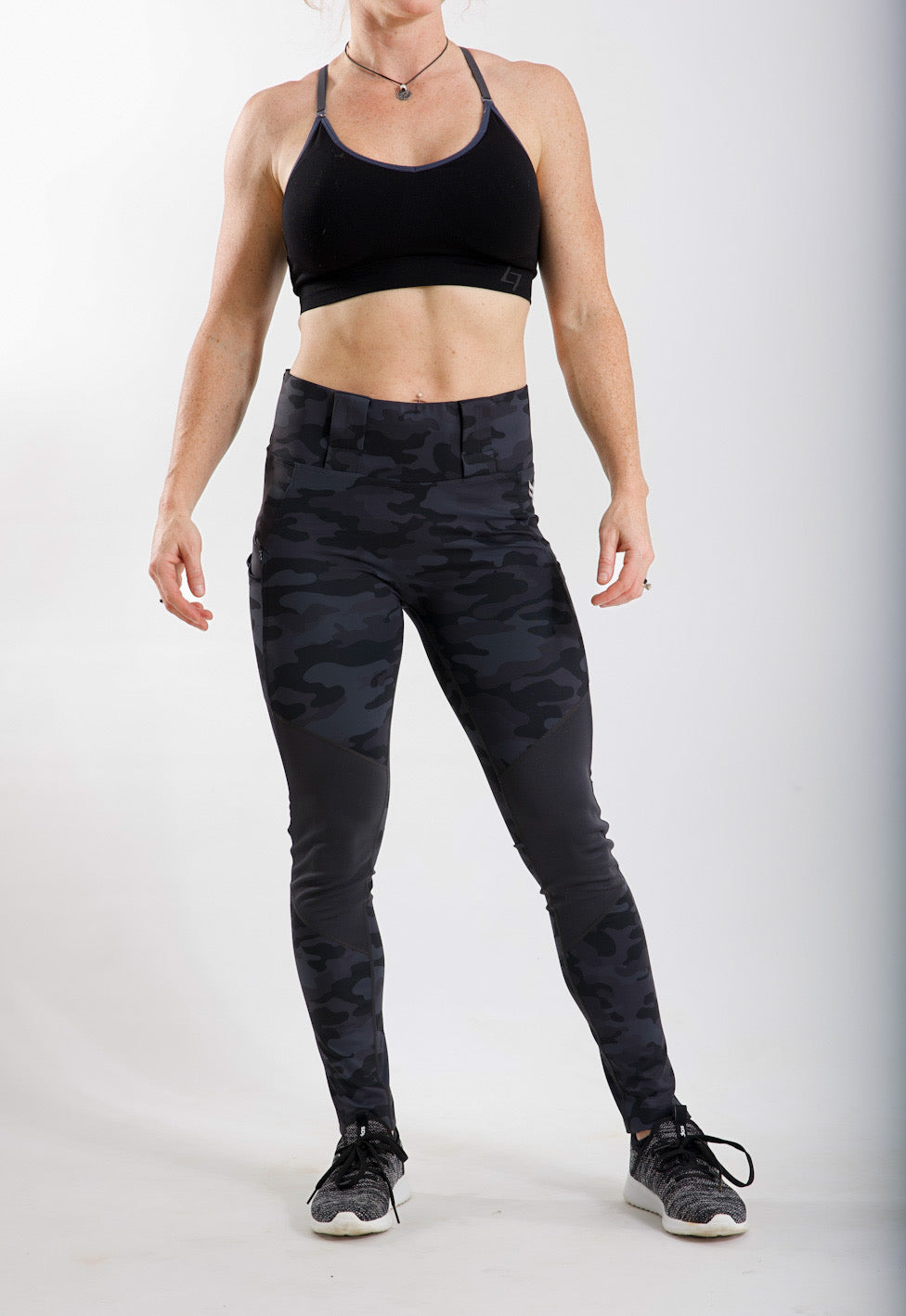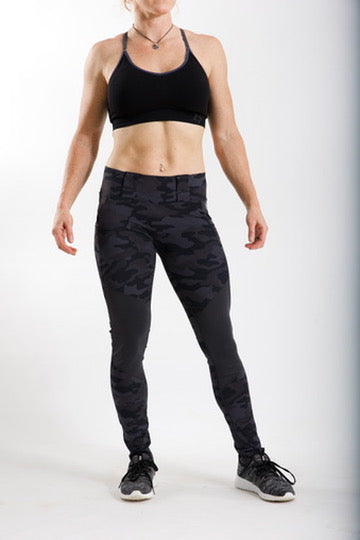
News
Are You Wearing Concealed Carry Clothes Wrong? Here’s How To Fix It
Are You Wearing Concealed Carry Clothes Wrong? Here’s How To Fix It
Every woman who carries knows that being prepared means feeling comfortable, confident, and capable in the clothes you wear every day.
Yet, many women unknowingly wear their concealed carry outfits wrong: compromising safety, causing discomfort, or making concealment ineffective.
This guide breaks down what most people get wrong and practical ways to fix it. Understanding the correct carry setup turns ordinary outfits into reliable protection.
The Most Common Mistakes Women Make
1. Wearing the Wrong Fit: Why Size and Fabric Play a Key Role?
Tight fits may look stylish but can turn carry setups into discomfort traps. Carrying demands freedom in movement , and that begins with how your clothing performs.
Overly loose fits can also cause issues: drooping waistlines or shifting holsters reduce draw stability. Instead, prioritize compression-based flexibility, the right apparel holds secure without compromising comfort.
Concealed carry leggings feature reinforced fabric blends designed for holster weight without sag or twist. These are not typical ladies leggings but precision-engineered pieces to balance comfort and carry efficiency.
Key tips:
• Choose high-stretch yet supportive material.
• Look for concealed-ready styles like leggings with belt loops or tactical yoga pants.
• Test your draw while seated and walking before wearing out.
2. Misplaced Firearm Position: The Balance Between Access and Safety
Your firearm's placement dictates both comfort and speed. Many carriers opt for convenience or wearing holsters loosely. Unfortunately, poor positioning leads to visibility and draw difficulty.
For leggings or mid-waist apparel, strong-side positions often create the best balance of control. These zones provide adjustability with movement and ease consistent practice.
Common mistake:
Wearing too far back toward the hip pocket: this limits access and adds printing risk, especially with tight outerwear.
Correction:
Adjust your angle to align with your natural hand resting position. This improves confidence under tension without revealing the weapon outline during daily activities.
3. Ignoring Waist Support

Your waistband is the foundation of concealed carry comfort. Without structure, everything can become unstable. The waistband determines firearm retention, draw stability, and concealment confidence.
If you’ve experienced waistband sag or shift, it’s often a sign your outfit was not designed with tactical integration in mind. For example, women's leggings made purely for athleisure fail to distribute weight evenly, while models like women's tactical capri or crusader leggings provide internal tension panels for proper grip.
For a quick fix:
• Opt for high waist leggings or spandex leggings high waisted for better rise support.
• Avoid low-rise cuts unless they feature added tightening structure.
• Use garments with belt integration such as yoga pants with belt loops.
Even women's skort designs can offer concealed carry functions if integrated properly. The key is structure and comfort.
4. Overlooking Seasonal Adjustments
Clothing that works in summer may fail in winter. Layering mistakes are among the most common issues carriers face. Too much bulk hides concealment but restricts access. Too little insulation exposes printing through thin fabrics.
Light inner compression garments like concealed carry compression shorts or women spandex shorts make great foundations beneath thicker outerwear.
A detailed guide on layering adjustments can be helpful to explore winter-specific setups and best layering approaches. It’s an essential reference for understanding movement through seasonal carry transitions.
5. Mismatched Clothing Combinations
Even the best tactical wear loses its performance when layered incorrectly. You’ll ruin balance if you pair structured leggings with heavy, loose tops or mix light materials with bulky holsters.
Here’s how to layer right:
• Bottom: A moisture-controlling base such as tactical leggings that hold structure and safety.
• Mid: Fitted tops like tactical t-shirts that allow seamless drawing motion.
• Outer: Jackets with side-zip or panel features for smooth access.
6. Neglecting Trigger Protection

An often-missed detail is the trigger guard’s coverage. Many clothing-based carry designs forget security at this level. Carrying without protection can be hazardous during quick movements or re-holstering.
Garments designed with built-in retention, like concealed carry clothing with trigger guard, solve this through application-specific engineering. They combine comfort padding and structure built to minimize accidental exposure.
If your wear does not have this safeguard, integrate a compatible holster that aligns directly with your body position. It’s a minimal upgrade with major long-term safety benefits.
7. Overcompensating with Layers
Some carriers wear excessive clothing to hide their setup, which often backfires. More fabric equals more snag risk, slower access, and visible bunching.
Good concealment begins with effective base-level construction. For instance, lightweight edc apparel minimizes reliance on extra layers because the support exists in the clothing itself.
8. Forgetting to Train With the Outfit
The biggest user error in concealed carry apparel isn’t the clothing, it’s the lack of training with it. Dressing right means nothing if your draw motion and comfort haven’t been tested under stress.
Your body moves differently in capri leggings, compression shorts, or women's tactical skorts than it does in everyday wear. Each has its range and retention balance. Practice often, and note friction points or draw speed inconsistencies.
Drills to perform regularly:
• Try draws before leaving home.
• Sitting and standing transitions in full outfit.
• Holster reseats while maintaining trigger discipline.
Train smart, not just often. A small adjustment in your movement coordination yields major comfort and safety improvements.
9. Prioritizing Fashion Over Function
The tactical apparel industry combines style with purpose. Yet, some still treat concealed carry clothing as standard fashion wear. That mistake invites printing and instability.
Modern pieces like faux leather leggings combine sleek visuals and carry structure simultaneously, granting aesthetic flexibility with controlled compression.
You don’t need to sacrifice form for function; you simply need the right brand philosophy behind your apparel.
Troubleshooting Common Concealed Carry Discomforts
|
Issue |
Likely Cause |
Quick Fix |
|
Holster shift when walking |
Weak waistband or incorrect size |
Try high rise leggings or waistband inserts |
|
Firearm print visible |
Fabric tension imbalance |
Choose thicker, stretch-balanced leggings like tactical leggings |
|
Poor draw under jacket |
Wrong outerwear layering |
Use flexible arm-gusset coats or fitted mid-layers |
|
Weapon movement during run |
Loose base apparel |
Try compression layering like concealed carry compression shorts |
Addressing these small discomforts enhances long-term wear confidence and carrying consistency.
Mind Your Movement Patterns

Carrying correctly means being aware of how you move in your outfit. Simple activities like stretching, reaching, or sitting can expose poorly adjusted setups.
The fix:
• Identify exposure angles during natural movement routines.
• Choose adaptive apparel like women's tactical shorts or tactical capri pants for flexible compliance.
• Avoid bending angles that reveal holster lines.
When combined with right gear, your movements remain natural, and your security intact.
FAQ: Quick Fixes for Common Mistakes
Q: Why does my setup print even with tactical clothing?
A: Improper waist compression or loose layering often leads to outlining. Choosing high waist leggings with slight compression resolves most issues.
Q: Is there a difference between tactical and standard leggings?
A: Tactical versions like carry leggings balance comfort with retention zones, unlike casual fitness options.
Q: Should my holster be different for leggings versus jeans?
A: Yes. Use light-profile holsters or integrated guard designs when pairing with flexible fabrics like conceal carry leggings.
Q: How can I stop fidgeting with my gear all day?
A: If your setup constantly shifts, you’re likely wearing gear that doesn’t fit your shape. Upgrade to structured pieces such as women's tactical apparel that stay secure naturally.
Final Thoughts: How to Start Wearing Carry Clothing Right?
Wearing concealed carry apparel right is less about buying new gear and more about understanding your setup. It’s aligning with fabric, fit, and function with intent.
Focus on fit, train with consistency, and fix mistakes early. Building confidence with your everyday carry setup transforms not only safety but peace of mind.
If you’re looking to refine your comfort and wardrobe integration, practical pieces from Vakandi Apparel help provide form, function, and unshakable everyday confidence.
Carry well. Train smart. Stay vigilant and make your gear work with you.






